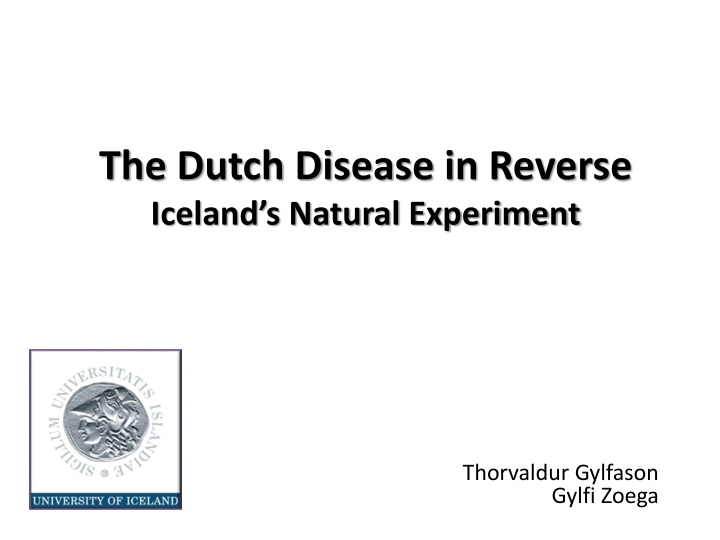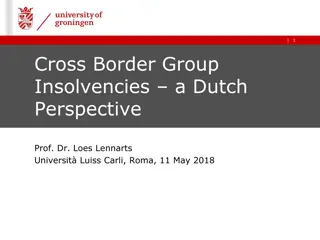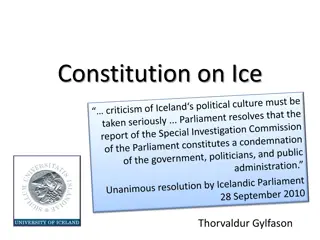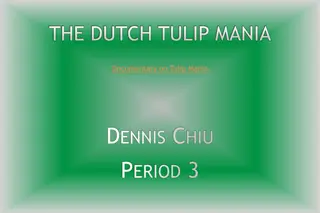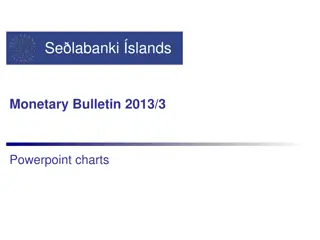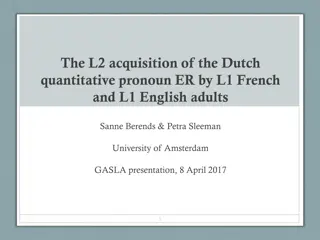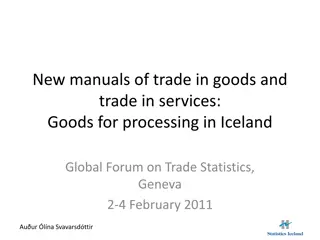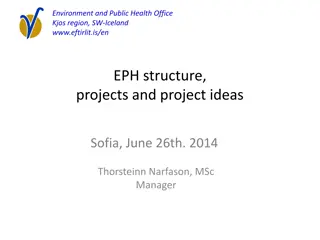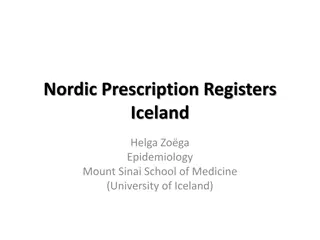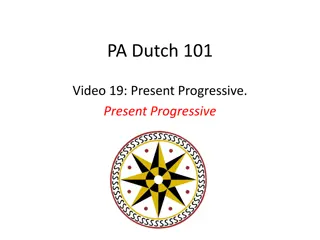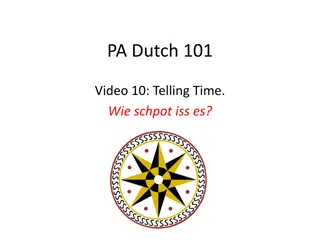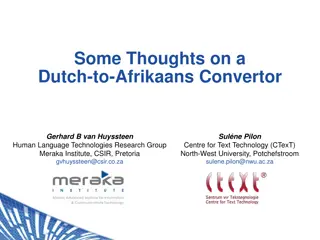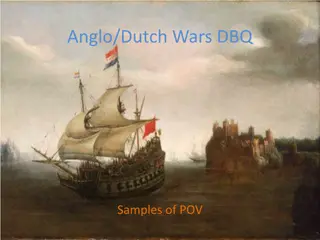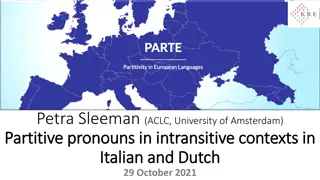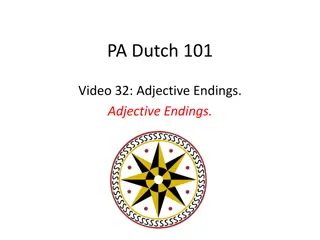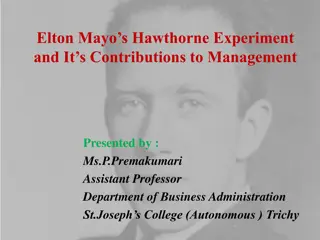The Dutch Disease in Reverse: Iceland's Natural Experiment
Abundant natural resources initially led to a systemically overvalued currency in Iceland, causing adverse effects on the tradable sector. However, a financial crash in 2008 resulted in a reverse Dutch disease scenario, where the currency depreciation boosted exports and facilitated economic recovery. Recent literature explores the challenges of managing natural resource abundance, highlighting issues like rent-seeking, poor governance, and corruption. Models show how natural resource booms can impede growth by affecting wages, exchange rates, and investment in tradable goods sectors.
Download Presentation

Please find below an Image/Link to download the presentation.
The content on the website is provided AS IS for your information and personal use only. It may not be sold, licensed, or shared on other websites without obtaining consent from the author.If you encounter any issues during the download, it is possible that the publisher has removed the file from their server.
You are allowed to download the files provided on this website for personal or commercial use, subject to the condition that they are used lawfully. All files are the property of their respective owners.
The content on the website is provided AS IS for your information and personal use only. It may not be sold, licensed, or shared on other websites without obtaining consent from the author.
E N D
Presentation Transcript
The Dutch Disease in Reverse Iceland s Natural Experiment Thorvaldur Gylfason Gylfi Zoega
Key points Abundant natural resources brought Iceland a systemically overvalued currency, with adverse effects on the secondary tradable sector During 2003-2008 another national treasure, the sovereign s AAA rating, was used to attract foreign capital, elevating the real exchange rate even further The financial collapse in 2008 left Iceland with a large foreign debt without the possibility of rollovers in foreign capital markets The currency plunged, producing a bout of the Dutch disease in reverse as witnessed, in particular, by a massive expansion of tourism after the crash
Key points Insofar as the trouble with abundant natural resources has to do with the real appreciation of the currency, the depreciation resulting from a financial crash can be viewed as a case of the Dutch disease in reverse Just as an appreciation of the currency weakens the current account, a massive depreciation following a financial crash stifles imports and strengthens exports, paving the way toward economic recovery
Literature Recent literature highlights several channels through which natural resource abundance, if not well managed, may retard economic growth Rent seeking Dutch disease Poor governance Political or ethnic conflict Corruption Autocracy Excessive borrowing Low levels of education
Literature Our 1999 model showed how a large and volatile primary sector would adversely affect the output of tradable goods by increasing real wages and the real exchange rate, lowering the relative price of tradable goods and hampering investment If learning-by-doing occurs mostly in the secondary export sector and not in the primary sector, we also showed that natural resource booms are likely to hamper growth by discouraging employment and investment
Parallels Foreign aid inflows share important properties with natural resource discoveries Aid constitutes an unrequited transfer emerging like manna from heaven Aid inflows have about them an aura of other people s money which, like lottery winnings, as well as due to their transitory and often volatile nature, may seem easy to fritter away Like foreign aid that may create an encouragement to divert the aid from its intended beneficiaries, natural resource abundance sometimes tends to attract the wrong sort of people to politics by offering them opportunities to divert rents from their right owners
Parallels Inflows of foreign credit can exert a similar manna-from-heaven effect on its recipients as resource windfalls and foreign aid not least if the borrowing nation behaves as if there is no tomorrow and bankers revel in their role as rentiers In some cases, resource windfalls, foreign aid and rapid capital inflows may invite plunder with royal families, clerics, generals, politicians and bankers sitting in the driver s seat
GNI per capita 1990-2013 (Current international dollars, ppp) Denmark and Iceland Greece, Iceland, Ireland, Latvia 50000 45000 Greece 45000 40000 Denmark Iceland 40000 35000 Iceland Ireland 35000 30000 Latvia 30000 25000 25000 20000 20000 15000 15000 10000 10000 5000 5000 0 0 Shaky recovery accompanied by labor market unrest (doctors on strike!) and danger that relaxation of capital controls will cause further depreciation Source: World Bank, World Development Indicators.
Exports of goods and services and manufactures Exports 1960-2012 (% of GDP) Manufactures exports 1962-2012 (% of total exports) 70 70 Denmark 60 60 Iceland 50 50 40 40 30 30 Denmark 20 20 Iceland 10 10 0 0 Source: World Bank, World Development Indicators. Iceland s export share in GDP was flat 1870-2008
Imports and domestic credit Domestic bank credit 1960-2012 (% of GDP) Import volume 2000-2011 (2000 = 100) 200 350 Denmark 180 Denmark 300 Iceland 160 Iceland 250 140 120 200 100 150 80 60 100 40 50 20 0 0 Source: World Bank, World Development Indicators.
Investment and adjusted net saving Gross investment 1965-2012 (% of GDP) Adjusted net saving 2005-2012 (% of GNI) 40 40 Denmark Denmark 35 35 Iceland Iceland 30 30 25 25 20 20 15 15 10 10 5 5 Iceland: Collapse of net investment 0 0 30% % of GDP -5 -5 20% -10 10% -10 0% Source: World Bank World Development Indicators. -10%
Model Primary output is stochastic and follows a Brownian motion subject to random productivity shocks and is independent of the real exchange rate: dW represents the increment of a Wiener process , having a zero mean and a unit SD The drift term reflects growth in primary output while the stochastic term represents the vicissitudes of, e.g., commodity prices that make primary output rise or fall at random, creating uncertainty about output in the primary sector
Model Secondary output is deterministic
Model The drift term, with < 0 denoting appreciation a fall in the relative price of tradable goods signals the Dutch disease The volatility of the real exchange rate described by the stochastic term may be no less important in its effect on investment for other export industries and import-competing industries
Model Employment and output in secondary sector depend on the real exchange rate , and hence on primary-sector output and external debt as well as primary-sector wages A primary-sector boom has an immediate adverse effect on secondary-sector output by reducing (i.e., by making the currency appreciate), a key aspect of the Dutch disease Firms will decide to invest whenever the real exchange rate exceeds i.e., falls below the threshold
Model Investment threshold is a function of the parameters of the model Rise in primary-sector wage raises secondary- sector wages, lowering profits and lifting the real exchange threshold, making investment less likely Volatility of , created by volatility of primary output, will (a) raise profits due to convexity in the profit function and (b) lift the threshold by increasing the option value of investment Second effect dominates, so increased volatility of primary output makes investment less likely on balance
Model Investment threshold is a function of the parameters of the model Positive trend growth of primary output, , has a negative effect on the trend growth of (i.e., ), which raises the investment threshold and makes investment less likely Increase in the fixed factor endowment, T , lowers the investment threshold so firms start investing at a lower real exchange rate
Data: Real exchange rate, current account, tourism and non-primary merchandise exports Real exchange rate and the current account The real exchange rate and tourism Real exchange rate and tourism The real exchange rate and the current account 1.5 10 1.5 350 current account (%) change in number of tourists (%) real exchange rate real exchange rate 1.4 5 1.4 300 current account 1.3 0 1.3 250 real exchange rate 1.2 -5 1.2 200 1.1 -10 1.1 150 1.0 -15 1.0 100 real exchange rate tourists 0.9 -20 0.9 50 0.8 -25 0.8 0 60 65 70 75 80 85 90 95 00 05 10 60 65 70 75 80 85 90 95 00 05 10 The current account measures the current account surplus as a ratio to GDP. The real exchange rate is defined as the relative price of tradables. Tourism is calculated as the number of foreign tourists as a proportion of the population of Iceland. The real exchange rate is defined as the relative price of tradables. The real exchange rate and the CHANGE in the number of tourists Real exchange rate and change in tourism The real exchange rate and other exports Real exchange rate and other exports 1.5 50 1.5 70 change in number of tourists (%) real exchange rate real exchange rate other exports (%) 1.4 40 1.4 60 other exports real exchange rate real exchange rate 1.3 30 1.3 50 1.2 20 1.2 40 1.1 10 1.1 30 1.0 0 1.0 20 0.9 -10 0.9 10 changer in number of tourists 0.8 -20 0.8 0 60 65 70 75 80 85 90 95 00 05 10 60 65 70 75 80 85 90 95 00 05 10 Tourism is calculated as the number of foreign tourists as a proportion of the population of Iceland. The change is calculated as the change in the proportion between any two years. The real exchange rate is defined as the relative price of tradables. Other exports are calculated as the ratio of non-primary merchandise exports to total merchandise exports. The real exchane rate is defined as the relative price of tradables.
VAR model E = real exchange rate (i.e., ) CA = current account (% of GDP) T = change in tourists (% of population) NP = change in non-primary exports (% of total exports)
MLE estimation results for VAR(2) T 10.02 NP 8.71 1960-2012 Log(E) CA Log(E-1) Log(E-2) CA-1 CA-2 T-1 T-2 NP-1 NP-2 R2 0.96* 33.29* -0.22 -30.18* 26.50* -11.50* -0.00 0.00 0.52* 0.10 -0.51* 0.23 -0.21 0.15 -0.00 -0.12 0.35* 0.13 -0.03 0.06 -11.65 11.94 0.35* -0.60* 12.78 -9.36 0.01 -0.02 -0.42 -0.24 0.60 0.65 0.58 0.26 t-values not shown; * denotes statistical significance at the 5% level.
VAR Results: Impulse response functions to a rise in the price of tradable goods Response of LOG(E) to LOG(E) Response of Log(E) to Log(E) Response of CA to LOG(E) Response of CA to Log(E) .12 6 .08 4 .04 2 .00 0 -.04 -2 -.08 -4 1 2 3 4 5 6 7 8 9 10 1 2 3 4 5 6 7 8 9 10 Response of D(NP) to LOG(E) Response of NP to Log(E) Response of D(T) to LOG(E) Response of T to Log(E) 6 4 4 3 2 2 0 1 -2 0 -4 -1 -6 -2 1 2 3 4 5 6 7 8 9 10 1 2 3 4 5 6 7 8 9 10
Tourism and food exports Tourist arrivals 1995-2011 (% of population) Food exports 1962-2012 (% of merchandise exports) 200 120 France Iceland Spain Greece Mauritius France Greece 180 Iceland Mauritius 100 160 Spain 140 80 120 100 60 80 40 60 40 20 20 0 0 Source: World Bank World Development Indicators.
Discussion Capital inflows resemble natural resource windfalls in that both events flood the recipient country with easy money, triggering similar reactions among the natives General euphoria Real appreciation of the currency (Dutch disease) Reckless public policies in the belief that anything goes Rent seeking, even plunder Large capital outflows can be viewed as the Dutch disease in reverse, triggering an economic downturn and real depreciation of the currency
